#Mathilde Bonaparte
Explore tagged Tumblr posts
Text
So the historian Hippolyte Taine did not like Napoleon’s mother:
“His mother, Laetitia Ramolini, from whom, in character and in will, he derived much more than from his father, is a primitive soul on which Civilization has taken no hold. She is simple, all of a piece, unsuited to the refinements, charms, and graces of a worldly life; indifferent to comforts, without literary culture, as parsimonious as any peasant woman, but as energetic as the leader of a band.”
According to Patrice Gueniffey, he also called her “slovenly”, which pissed off one of Napoleon’s nieces, Mathilde, who banned him from her literary salon because he randomly insulted her dead grandmother.
#quote source: The Origins of Contemporary France Volume 5#Napoleon#Napoleon’s mother#letizia Bonaparte#mathilde bonaparte#Patrice Gueniffey#history#taine#hippolyte taine#quote#quotes#Napoleon’s family#napoleonic era#napoleonic#first french empire#french empire#19th century#2nd empire#second French empire#2nd French empire#napoleon bonaparte#1800s#France#French
20 notes
·
View notes
Text

Mathilde Laetitia Wilhelmine Bonaparte, Princesse Française, Princess of San Donato (27 May 1820 – 2 January 1904), was a French princess and salonnière. via Wikipedia La Princesse Mathilde avec une palette de peintre à la main, by Adolphe Dallemagne, print on albumin paper, 22.7 x 16.2 cm, © Beaux-Arts de Paris
0 notes
Text

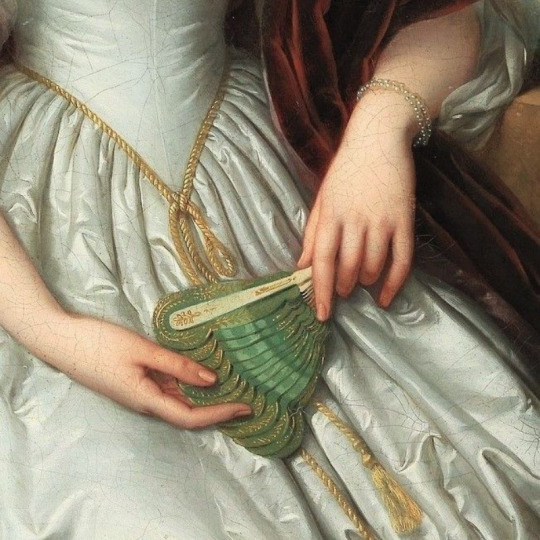

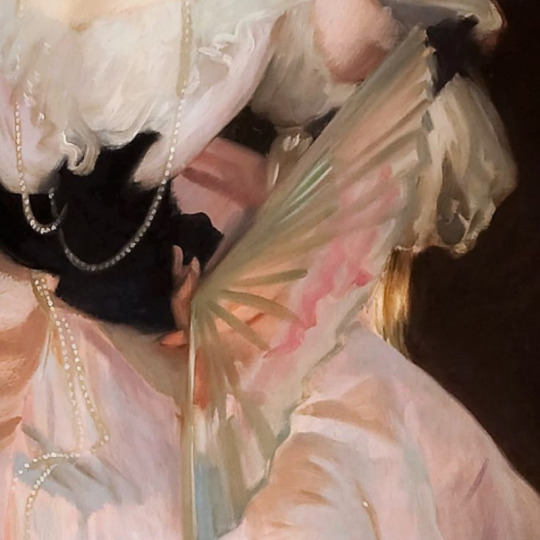


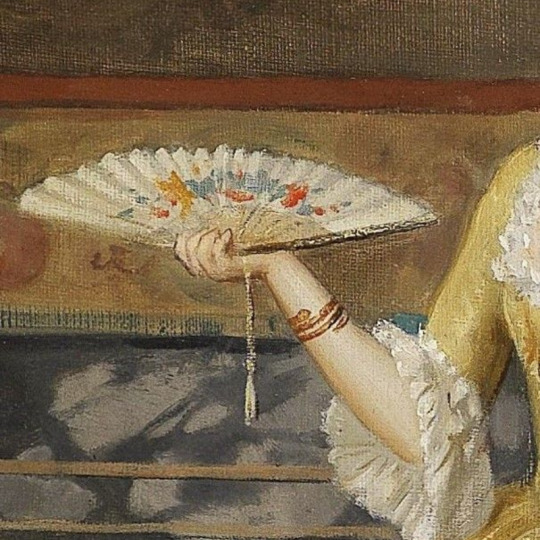
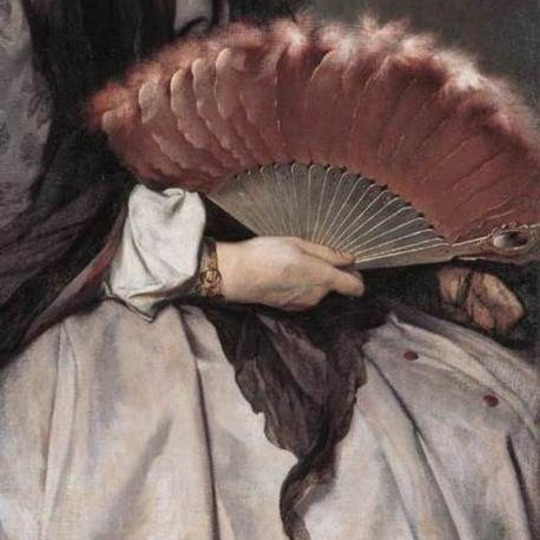





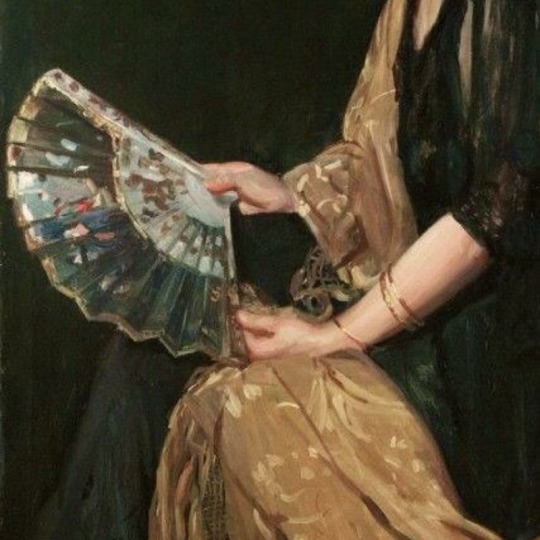
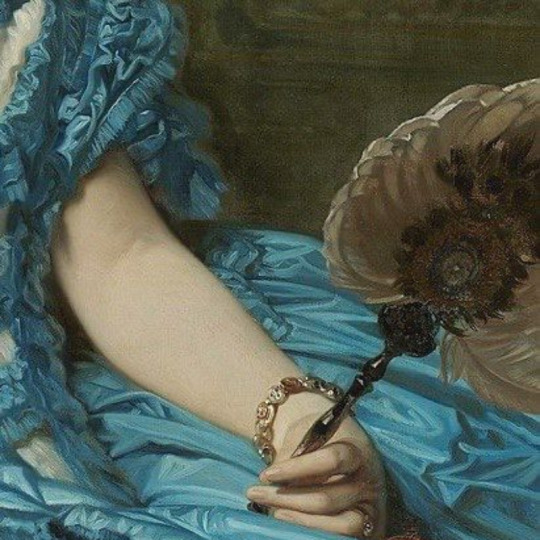
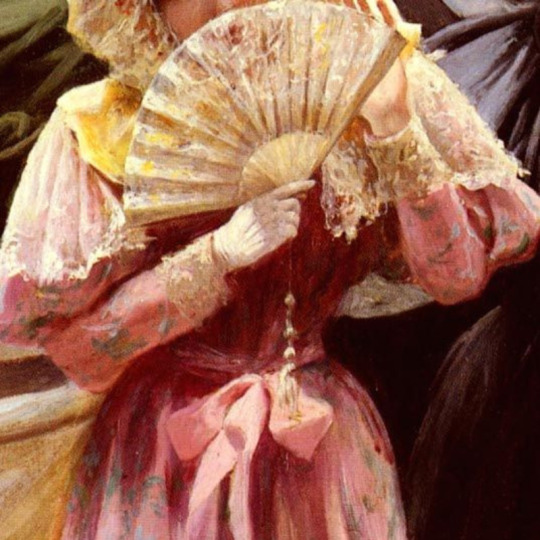


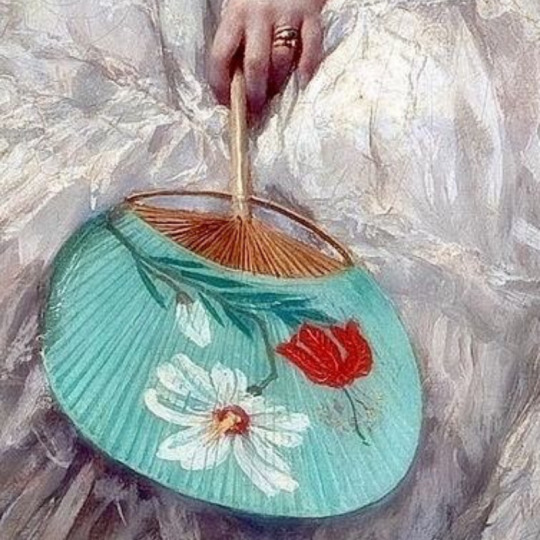
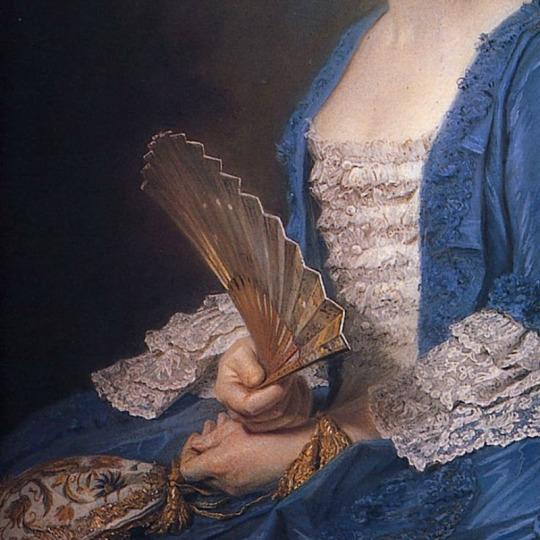



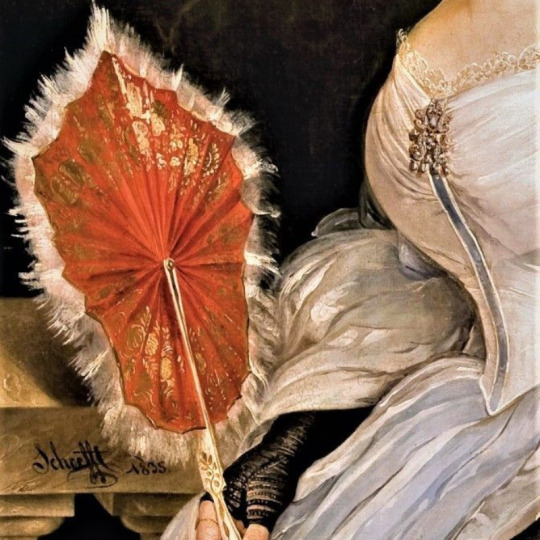



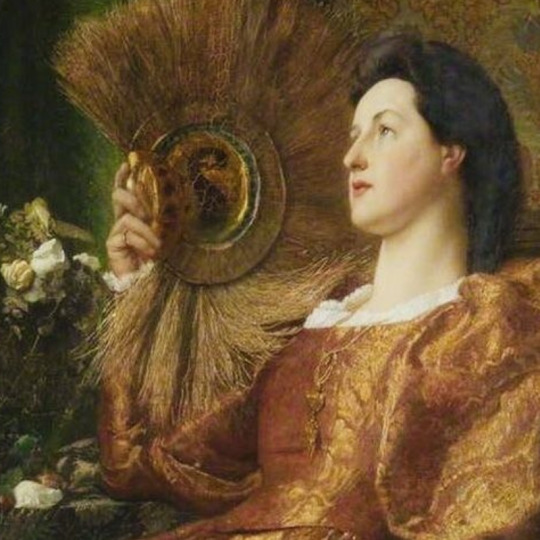
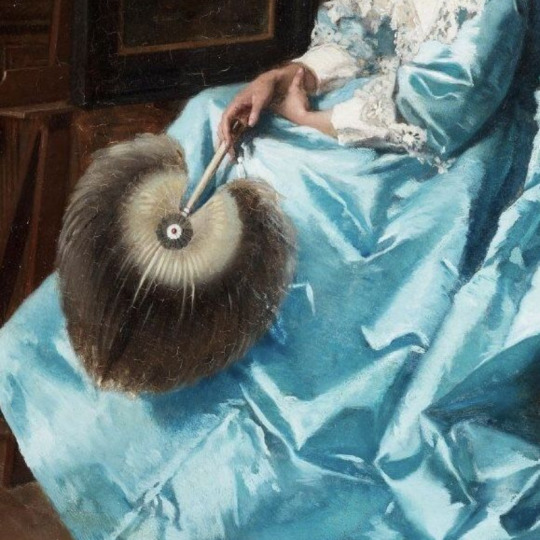
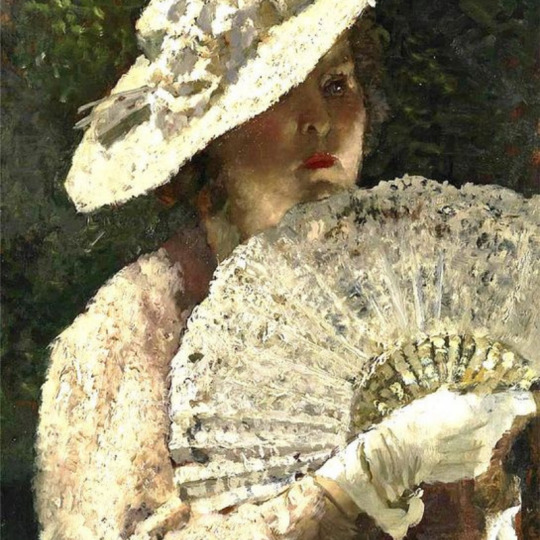
fans + art
#artist is i think l gerard#this post is going be kinda hard to find some of the paintings and artist because they are cut off but im trying my best#artist i cannot find#i love another by abraham solomon#adele meyer mrs carl meyer by john singer sargent#cant find this artist#cant find artist nor painting#artist is franz von persoglia#i think this is anselm feuerbach#princess elena pavolovna belosselsky-belozersky by christina robertson#cant find artist or painting name#portrait of madame fanny leontine gronkowska by barbara mackay#artist is frederick warren freer#princess mathilde bonaparte by edouard-louis dubufe#the japanese fan by elizabeth reynolds finley#the painting is called blue dress but i cant find the artist#leaving the ball opera by pedro pierre ribera#elegant lady with a fan by ludwig knaus#idle thoughts by auguste toulmouche#can't find artist or painting#marie madeleine mazade by maurice quentin de la tour#cant find anything on this one#portrait of mrs. francis stanton blake by julius le blanc stewart#artist is jean francois portaels#artist is august schoefft#mary frances mackenzie by frank dicksee#artist is jan adam kruseman#can't find anything on this#artist is sir william blake richmond#artist is jean de la hoese
230 notes
·
View notes
Text
Revolutionaries with a Hard Fate after the end of the revolution
Gâteau, Saint-Just's friend, whose loss he never recovered from. He died in despair in 1815 during the Bourbon Restoration.
Marie Angélique Lequesne, widow of Ronsin, later divorced Turreau, who was also active in the revolution. She had a terrible marriage with him (Turreau betrayed the Ronsin couple twice, once while Ronsin was alive, pretending to be his friend and stabbed him in the back when Ronsin needed supportwhile he was being attacked as one of the representatives of the Hébertist faction during the period of the factional infighting. The second time by horribly mistreating Marie-Angélique after that he married her , even having her whipped). You will see in the links I’m sending. She also lost a son during her lifetime. It’s possible Turreau separated her from her sons’ custody. In fact, to punish her for their separation, he made her live in poverty during three years and she had to seek help from a judge to return to France. It’s likely that this poverty lasted until the end of her life, as her daughter, Alexandrine, died in misery and poverty (Alexandrine, who was also a victim of her father Turreau). Here are the posts: Letter from Turreau to Ronsin and the Complex and The Day a Judge Confronted Turreau for His Actions
Marie-Anne Babeuf, widow of Gracchus Babeuf, who had been her husband’s right hand. Before the revolution, she had already lost a daughter due to a boiling water accident. Gracchus never recovered from this loss. Then, under the Directory, their other daughter, Sophie, died of malnutrition caused by the high prices of rations (Gracchus wrote a letter of despair in prison, saying that people like Boissy d'Anglas had condemned his daughter: "I had a seven-year-old daughter; I soon received the heartbreaking news that she died from the murderous reduction of the two ounces of bread."). She was pregnant when her husband was arrested, and she walked miles with her son Emile to try to save him. She may have even tried to help him escape, according to certain letters. She continued to fight after her husband's execution and was repeatedly arrested by the police. But her son Camille went mad and committed suicide. As for her other son, Caius, he died in Vendôme during the foreign invasion of France at the age of 17. It’s possible that she even outlived her last son, Emile, as, despite being known as a militant with a strong character in adversity, and being arrested by the police under the Directory and Bonaparte, her death date is unknown. Some say she was still alive when her last son, Emile, died. She also saw many of her friends die under the mockery of justice, including Topino-Lebrun, executed under Bonaparte (see Topino Lebrun: A Revolutionary Jacobin Close to Gracchus Babeuf) or her friend René Vatar, who died in deportation (he had campaigned for her release when she was imprisoned).
Claude-Antoine Prieur, who lived his last years very painfully. He lost his beloved daughter and granddaughter. His friend Lazare Carnot died in exile, and Prieur’s friends Frilley and Monnet did not return his friendship. See the very good post ( and sad ) post by @aedesluminis on Prieur’s tragic end: https://www.tumblr.com/aedesluminis/758618574216724480/nigrit-i-dont-think-she-cared-much-about-the?source=share
Jean-Nicolas Pache. He withdrew from political life. He was close to his children, especially Sylvie Audouin (according to Mathilde Larrère, she was a fervent Hébertist and therefore supported her father ideas). He survived his daughter, who often visited him, while watching everything he had worked for collapse. I already talked about Sylvie here quickly here and her role during the revolution and the Directory with her husband Xavier Audouin ( https://www.tumblr.com/nesiacha/767044131014033408/very-mediocre-and-horrible-quote-from-buzot?source=share) . I really have to do a post about pache one day btw
Prieur de la Marne, who died in exile so poor that there was not enough money for his funeral.
Feel free to add because I know I've overlooked many and they all deserve more information
P.S: I hesitated to put Sophie Momoro in it after everything that happened in her life afterwards but if she died in poverty and had a failed marriage at least she was able to have her 3 children and her husband was not like Turreau ( here about some of the life of Sophie Momoro https://www.tumblr.com/nesiacha/758994396416016384/life-and-fate-of-sophie-momoro-n%C3%A9e-fournier-and?source=share). But she still have a sad end.
Sources:
Antoine Resche
Jean-Marc Schiappa
Claude Mazauric
Bloche
Mathilde Larrère
#frev#french revolution#tragic fate#all deserve better#even if you didn't like all of them it's so sad
30 notes
·
View notes
Text


François Flameng, pair of family murals in the Villa Masséna (1902-1903). Sitters identified below.


(Léon) Napoléon Louis Michel Ney, 4th Prince of Moskowa (1870-1928), son of (22), brother of (2)(9)(10)(18), half-brother of (6)(19)(21), husband of (14)
Charles Aloys Jean Gabriel Ney, 4th Duke of Elchingen (later 5th Prince of Moskowa) (1873-1933), son of (22), brother of (1)(9)(10)(18), half-brother of (6)(19)(21), husband of (28)
Princess of Essling (née Anne Debelle) (1802-1887), wife of (4), mother of (5)(13)(17)(20)
François Victor Masséna, 3rd Duke of Rivoli, 3rd Prince of Essling (1799-1863), husband of (3), father of (5)(13)(17)(20)
Victor Masséna, 5th Duke of Rivoli, 5th Prince of Essling (1836-1910), son of (3)(4), brother of (13)(17)(20), husband of (5), father of (6)(19)(21)
Anne Victoire Andrée Masséna (later Duchess of Albufera) (1884-1967), daughter of (5)(22), sister of (19), half-sister of (1)(2)(9)(10)(18)
Prince Paul Murat (1893-1964), son of (9)(15), brother of (8)(11)(16)(23)(24)(27)
Princess Marguerite Murat (later Baroness Lejeune) (1886-1956), daughter of (9)(15), sister of (7)(11)(16)(23)(24)(27)
Princess Joachim Murat (née (Marie) Cécile Ney) (1867-1960), daughter of (22), sister of (1)(2)(10)(18), half-sister of (6)(19)(21), wife of (15), mother of (7)(8)(11)(16)(23)(24)(27)
Rose Blanche Mathilde Ney (later Princess of Trabia) (1871-1939), daughter of (22), sister of (1)(2)(9)(18), half-sister of (6)(19)(21)
Prince Charles Michael Joachim Napoléon Murat (1892-1973), son of (9)(15), brother of (7)(8)(16)(23)(24)(27)
Prince Eugène Louis Michel Joachim Napoléon Murat (1875-1906), cousin of (15), husband of (18), father of (25)(26)
Mrs d'Attainville (née Marie Anne Victoire Masséna) (1826-1913), daughter of (3)(4), sister of (5)(17)(20)
Princess of Moskowa (née Eugénie Laetitia Barbe Caroline Lucienne Marie Jeanne Bonaparte) (1872-1949), wife of (1)
Joachim Napoléon Murat, 5th Prince Murat (1856-1932), cousin of (12), husband of (9), father of (7)(8)(11)(16)(23)(24)(27)
Prince Alexandre Murat (1889-1926), son of (9)(15), brother of (7)(8)(11)(23)(24)(27)
Countess Reille (née Françosie Anne Masséna) (1818-1895), daughter of (3)(4), sister of (5)(13)(20)
Princess Eugène Murat (née Violette Jacqueline Charolette Ney) (1878-1936), daughter of (22), sister of (1)(2)(9)(10), half-sister of (6)(19)(21), wife of (12), mother of (25)(26)
Victoire Laura Anne Gabrielle Masséna (later Duchess of Fezensac) (1888-1918), daughter of (5)(22), sister of (6)(21), half-sister of (1)(2)(9)(10)(18)
Andre Prosper Victor Masséna, 4th Duke of Rivoli, 4th Prince of Essling (1829-1898), son of (3)(4), brother of (5)(13)(17)
Andre Prosper Victor Eugène Napoléon Masséna, 6th Duke of Rivoli, 6th Prince of Essling (1891-1974), son of (5)(22), brother of (6)(19), half-brother of (1)(2)(9)(10)(18)
Princess of Essling (née Paule Marguerite Laure Juliette Furtado-Heine; Ney, Duchess of Elchingen) (1847-1903), wife of (5), mother of (1)(2)(6)(9)(10)(18)(19)(21)
Prince Louis Murat (1896-1916), son of (9)(15), brother of (7)(8)(11)(16)(24)(27)
Prince Jérôme Murat (1898-1992), son of (9)(15), brother of (7)(8)(11)(16)(23)(27)
Prince Pierre Eugène Louis Michel Joachim Napoléon Murat (1900-1948), son of (12)(18), brother of (26)
Princess Paule Caroline Mathilde Murat (later Blanc) (1901-1937), daughter of (12)(18), sister of (25)
Joachim Napoléon Michel Murat, 6th Prince Murat (1885-1938), son of (9)(15), brother of (7)(8)(11)(16)(23)(24)
Duchess of Elchinger (née Germaine Roussel) (1873-1930), wife of (2)
3 notes
·
View notes
Note
Is there any royal family that you dislike you can name more than 1 ;)
Grand Duke Vladimir Alexandrovich's family 😒
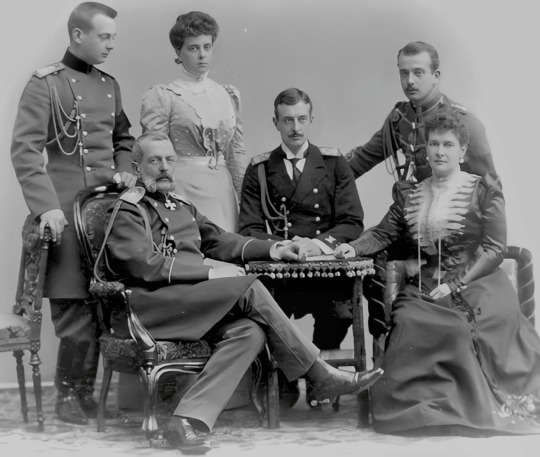
Of all the royals I've ever known, grand duke Vladimir Alexandrovich (paternal uncle of Tsar Nicholas II) and his family have always been my least favorite.☹️
They are my least favorite for the following reasons:
Grand Duke Vladimir Alexandrovich and his wife Grand Duchess Maria Pavlovna were hostile and disloyal to Emperor Nicholas II, who was Vladimir's nephew and Maria's cousin. They held a rival court at their palace in Saint Petersburg and spread malicious gossip about the Emperor and his wife Empress Alexandra Feodorovna.
Maria Pavlovna was ambitious and greedy, and used her influence to obtain money, jewels, and estates from the Tsar and other wealthy people. She also exploited her position as the president of the Russian Red Cross to embezzle funds and supplies for her personal use
She was arrogant and snobbish, and looked down on other members of the Imperial Family, especially those who married below their rank or were not of Russian origin. She also despised the Empress Alexandra Feodorovna, whom she considered a German spy and a bad influence on the Tsar
Kirill Vladimirovich, son of Vladimir Alexandrovich and Maria Pavlovna, is best known for his scandalous affair with his married first cousin, Princess Victoria Melita of Edinburgh.
Kirill and Victoria Melita got married years later, after Victoria Melita divorced her first husband. Their marriage was considered incestuous and morganatic by the Russian Orthodox Church and the Imperial Family, and caused a scandal in the Royal Courts of Europe and Great Britain
Kirill betrayed Emperor Nicholas II during the February Revolution of 1917, when he marched to the Tauride Palace wearing a red armband to show his support for the Provisional Government. He also renounced his rights to the Russian throne in 1917, but later claimed them back in 1924, proclaiming himself as the head of the House of Romanov and the rightful heir to the throne, despite the existence of other senior claimants.
Boris Vladimirovich is known for his scandalous affair with his married first cousin Queen Marie of Romania! Boris Vladimirovich was a notorious playboy and gambler, who spent lavishly on women, cars, and parties. He had numerous affairs and illegitimate children, and was involved in several scandals with actresses, dancers, and socialites. He was disloyal to his cousin, Emperor Nicholas II, and supported the February Revolution of 1917 that overthrew the monarchy. He also collaborated with the Bolsheviks and accepted their protection after the October Revolution, while most of his relatives fled or were killed. He was selfish and greedy, and used his influence to obtain money, jewels, and property from the Soviet government. He also sold some of his family's treasures and artworks to foreign collectors and museums.
Elena Vladimirovna was considered snobbish and vain by some people, including her mother's social rival, Dowager Empress Maria Feodorovna. She also allegedly refused to greet her sister-in-law Princess Marie Bonaparte and drew back her skirts as if not to be touched by her...
Andrei Vladimirovich had an affair with the famous ballerina Mathilde Kschessinska, who was also the former mistress of Nicholas II and two other grand dukes. He married her in 1921 and recognized her son as his, even though the boy's paternity was uncertain.
Thanks for Asking 🥰🫶
#Vladimir Alexandrovich#Maria Pavlovna#Kirill Vladimirovich#Boris Vladimirovich#Elena Vladimirovna#Andrei Vladimirovich
25 notes
·
View notes
Note
Have you ever read "a study of dolls" published in 1897? I found some pages you might find interesting. you can find the book for free on google (askbox character limit :() pg43 acknowledges there were adult women who played with dolls in the 19th century. pg49 has an interesting passage about boys & dolls. mostly that they should be allowed to play with dolls & that it outweighs the risk of making "boy milliners". is "boy milliners" a euphemism for gay? maybe more like "sissy"?
pg 43 "Girls often play with dolls regularly until 13 or 14, when, with the dawn of adolescence, the doll passion generally abates. It is then realized more distinctly than before that dolls have absolutely no inner life or feeling. Some girls play with dolls with great pleasure, but secretly, till well on in the teens and often in the twenties, and occasionally married women, generally those without children, or single women, play with dolls all their lives." trying to send the quotes from 1897 page 49 "That boys are naturally fond of and should play with dolls as well as girls there is abundant indication. One boy in a family of girls, or boys who are only children, often play with dolls to seven or eight years of age. It is unfortunate that this is considered so predominantly a girl's play. Most boys abandon it early or never play, partly because it is thought girlish by adults as well as by children. (1/2) Of course, boy life is naturally rougher and demands a wider range of activities. The danger, too, of making boy milliners is of course obvious, but we are convinced that on the whole more play with girl dolls by boys would tend to make them more sympathetic with girls as children, if not more tender with their wives and with women later. Again, boys, as well as girls, might be encouraged to play with boy dolls more than at present, with great advantage to both." (2/2)
I have not read that, but it sounds fascinating! Information about adult doll collectors in the 19th century is scarce, though one hears tantalizing tidbits here and there- Napoleon Bonaparte's niece Mathilde is rumored to have been one, for example. Once it goes mainstream in the 1920s with boudoir dolls, though, we get psychologists insisting that it's a "freak" of "abnormal women" who need to have children instead (because of course, dolls are just Child Replacements). It was ever thus.
I HAVE heard accounts of little boys playing with dolls back then, though! mostly dolls representing boys, thought not always. It seems to have been somewhat more normalized than it is now- not entirely, however, as those quotes indicate. I don't know the specific euphemism "boy milliners," but I would hazard a guess that homophobia is indeed what it indicates, since millinery was a very feminine-coded occupation.
This is an amazing resource! Thank you so much for sharing.
89 notes
·
View notes
Text
julien sorel: the moon is beautiful tonight
mathilde de la mole: yeah
julien: you know who else is beautiful?
mathilde: who?
julien: bonaparte
mathilde, sighs: bonaparte...
2 notes
·
View notes
Text

Madame Mère (Maria Laetitia Ramolino Bonaparte, 1750 - 1836)
Artist: François Pascal Simon Gérard (French, 1770 - 1837)
Date: 1802-1803
Medium: Oil on Canvas
Collection: National Galleries of Scotland, Edinburg, Scotland
Description
This stately full-length portrait of Napoleon's mother, known as Madame Mère, shows her sumptuously dressed and seated in a grand apartment with a view overlooking the Tuileries in Paris. She came from a Tuscan family and was born in Corsica. A sculpted bust of her son as consul, close in type to one carved by Louis-Simon Boizot in 1800, confirms her status. Napoleon was the second eldest of her thirteen children, eight of whom survived. The portrait was taken to Italy by her granddaughter, Mathilde, Napoleon's niece, when she married into the wealthy Florentine Demidoff family.
#portrait#female#custome#seated#costume#france#bust#table#foot stool#francois pascal simon gerard#french painter#early 19th century painting#european#french culture#oil on canvas#headpiece#carpet#textiles
3 notes
·
View notes
Text

The Empress Eugénie, Wearing the Sash of the Order of Queen Maria Luisa
(Eugénie de Montijo, 1826–1920, Condesa de Teba)
Artist: Franz Xaver Winterhalter (1805-1871)
Date: 1854
Media: Oil on Canvas
Musée d’Orsay
Eugénie de Montijo (1826-1920) Empress of the French
Eugénie de Montijo (1826-1920) was the youngest daughter of the Count of Teba and niece of the Count of Montijo, whose name her father obtained and by which she is improperly known today. After her marriage to Louis-Napoléon Bonaparte, she became Empress of the French until 1873.
Her father supported the French during the Napoleonic Wars and as such was an afrancesado. Afrancesado was the name given to people who had collaborated with the French authorities during the occupation of Spain by Napoleon’s armies (1808-1814), unwelcome among the Spanish people and whose family was forced to seek refuge in Paris in 1834 at the time of the Carlist Wars. Eugénie received most of her education here, surrounded by an enlightened society influenced notably by Prosper Mérimée (1803-1870) a French writer, historian and archaeologist..
Empress of the French Until the Fall of the French Second Empire
In 1849 she made the acquaintance of Louis-Napoleon Bonaparte, President of the Republic, at the residence of his cousin Princess Mathilde. Princess Mathilde (1820-1904) was the cousin of Louis-Napoleon, and was initially engaged to the latter before marrying Anatole Demidoff, Prince of San Donato, from whom she was authorised to separate in 1847... Seduced by her beauty and personality, he diligently courted her before asking for her hand in 1853, when he had become Emperor of the French. The wedding was held in the Tuileries and Notre-Dame de Paris on 29 and 30 January 1853, and the Empress became the hostess and finest ornament of a particularly brilliant Imperial Court. In 1856 their only son was born, Louis-NapoleonLouis-Napoleon Bonaparte (1856 - 1879) received a military education from a young age. After the Commune, he was exiled to England with the Imperial family., who was given the title Prince Imperial (1856-1879).
After the fall of the Empire in 1870 and the death of Napoleon III in 1873, the Empress was sent into a long exile spent between England, Spain and southern France.
#oil painting#oil on canvas#empress eugenie#napoleon#french history#european#queen#french art#franz xaver winterhalter#french monarchy
4 notes
·
View notes
Text
Victor Hugo’s speech in support of Napoleon, and his support to lift the ban on the Bonaparte family
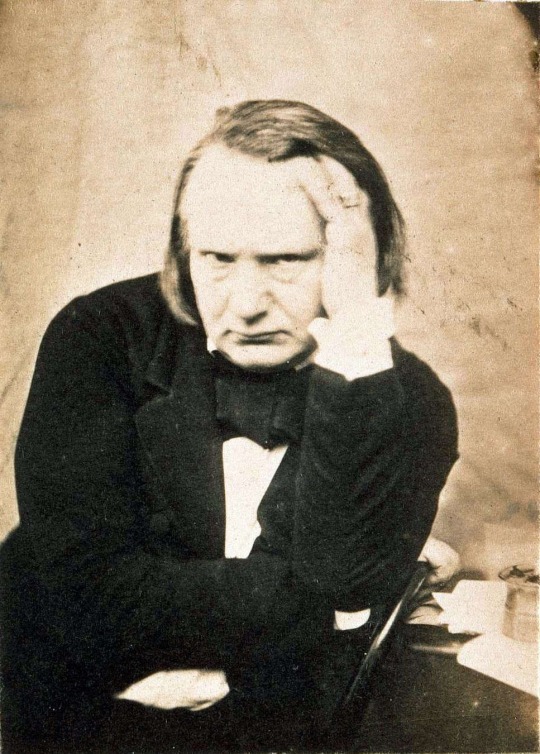
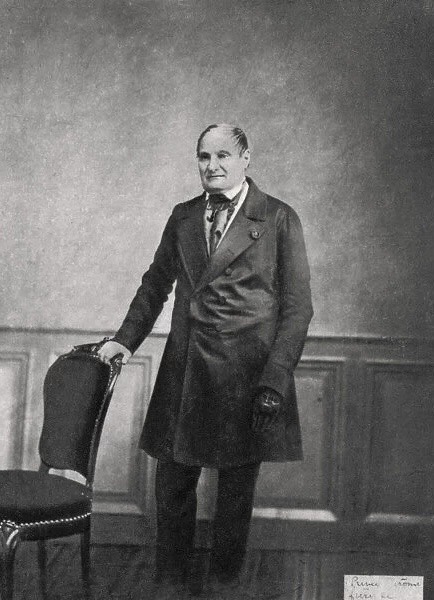
(Left: Victor Hugo, Right: Elderly Jérôme Bonaparte)
Excerpt from Jonathan Beecher, Writers and Revolution: Intellectuals and the French Revolution of 1848
—————-
Hugo was fascinated by the Praslin affair and wrote about it at length in his journals. But he was more deeply engaged by another issue brought to the Chamber of Peers in June, 1847 – the petition of Napoleon’s only surviving brother, Jérôme Bonaparte, who sought the repeal of the law exiling members of the Bonaparte family. “I declare without hesitation,” Hugo told the peers. “I am on the side of exiles and proscrits.”
Не obviously could not know that he himself was to spend almost two decades in exile. But one exile who mattered to Hugo in 1847 was the first Napoleon. In his speech to the Chamber of Peers Hugo contrasted the pettiness and corruption of the July Monarchy with the grandeur of Napoleon’s Empire:
As for me, in witnessing the collapse of conscience, the reign of money, the spread of corruption, the taking of the highest places by people with the lowest passions, (Prolonged reaction) in witnessing the woes of the present time, I dream of the great deeds of the past, and I am now and then tempted to say to the Chamber, to the press, to all of France: “Wait, let us talk a little of the Emperor. That will do us good!” (Intense and profound agreement).
After this speech, the elderly Jérôme Bonaparte personally thanked Hugo; and his daughter, the Princess Mathilde, invited him to dinner. Hugo was now regarded in some quarters as a Bonapartist.
—————-
[Italics in original]
“La Famille Bonaparte,” OC Politique, Laffont, 138-139.
#victor Hugo#Jerome Bonaparte#jerome#Napoleon’s brothers#Napoleon’s family#napoleon#napoleonic era#napoleonic#first french empire#napoleon bonaparte#french empire#19th century#france#history#bonapartism#bonapartist#1848 revolutions#1840s#1847#Hugo#writers and Napoleon
15 notes
·
View notes
Note
Was Maximilian de Beauharnais, younger son of Eugène de Beauharnais and Princess Augusta of Bavaria, ever have any other potential bridal prospects (maybe ones of the same religion as him?) before he wed or was the first and only Grand Duchess Maria?
Hi anon! I don't know the answer to this so I'm going to redirect you to @josefavomjaaga, the President of information about Eugène and his family on Tumblr, whom perhaps does know. I only know that Auguste opposed to the marriage because she didn't want her son to become Russian, and also that years before she had wanted her eldest son August to marry Mathilde Bonaparte, but I don't know if she had something similar in mind for Maximilian.
9 notes
·
View notes
Text

Mathilde Bonaparte by Ary Scheffer, 1844.
Princess Mathilde was Jerome's daughter and she lived until 1904!
wikimedia commons
3 notes
·
View notes
Text
The Tragic End of Jean Nicolas Pache

Pache had two children, Jean and Sylvie, whom he raised alone after the death of his wife (with the help of his mother). Sylvie never abandoned her father, even during the hardest times, when Pache left his revolutionary political career due to the persecution he faced. Despite the important political activities of her husband (up until around 1800 or 1802, when Xavier Audouin, though brilliant, intelligent, and well-known, also left politics), she and her husband made time to visit Pache at his home in Thin, spending a few months each year with him and his grandchildren. They enjoyed simple family moments, sharing simple meals, playing music, and gardening, even after the Restoration. According to Lenôtre (who mistakenly confused Sylvie's name with that of her daughter, who also died in Thin a year after her mother), Pache found joy in his daughter, as she reminded him of his late wife or at least their happy days together. However, Sylvie passed away before her father, and Pache's granddaughter died a year later in Thin, likely by his side (this child had fragile health according to Lenôtre).
In 1816, Xavier Audouin became a staunch royalist (though I don't know if this was due to his hatred of the violent trials he underwent during the Revolution, under the Directory as a known neo-Jacobin opponent, or under Bonaparte during the repression of Jacobins; at one point, Audouin had even predicted Bonaparte's rise and feared it. If, like Antonelle, Audouin saw Louis XVIII as the lesser evil compared to Bonaparte and allied himself with him under certain conditions, or if he made a 180-degree shift , or he become a royalist for the protection for he and his family under the laws of 1816, since Pache had been involved in the execution of Marie-Antoinette, which made him a « target » at the time). Regardless, Audouin never renounced his friendship with his father-in-law, even though Jean Nicolas Pache's son, Jean, had become distant from his father.
Pache, despite his deep affection for both his children, was not as well-loved by his son, according to Lenôtre. While Sylvie was devoted to her father, loyal (and a fervent revolutionary or at least a fervent supporter of the Hébertists according to Mathilde Larrère and Louis de Launay), Jean, on the other hand... According to Lenôtre, Jean allied himself with Bonaparte, while Jean Nicolas Pache refused to work for him when his friend Monge came to propose that he join Napoleon. Monge might have intervened in favor of his friend Pache and possibly for Xavier Audouin, who was on a list of Jacobins to be deported at one point. Fouché had at least included Pache on the list of proscribed individuals under Bonaparte, according to Louis de Launay but fortunately for Pache, Bonaparte would have preferred to listen to Monge's advice on the matter than Fouché's.
Pache had, however, been very involved in his son's education, teaching him about herbs, but Jean showed little loyalty to his father, according to Lenôtre. Jean apparently became a baron of the Empire and was later decorated by Louis XVIII. He insisted on being called Baron Jean and refused to carry his father's last name. Here is an excerpt from Lenôtre: "Jean often traveled to the Ardennes and visited his friend, Count de Broyés, at the Château de Jandun, near Thin-le-Moutier. However, he was careful not to visit his old revolutionary father, which would have compromised him in good society." At least Xavier Audouin, the former Hébertist and friend of René Hébert, turned royalist, never renounced his father-in-law. It seems that Xavier Audouin never completely abandoned his revolutionary friendships, but Jean, on the other hand... Moreover, unlike Sylvie or Xavier Audouin, Jean did not seem to share his father’s revolutionary political views.
Perhaps Lenôtre exaggerated, or perhaps Jean simply wanted to be cautious with the Restoration, as the repression of the White Terror was still fresh in people's minds, and he was the son of a man involved in the execution of Marie-Antoinette.
Here is the end of Pache’s life, according to Lenôtre, who lived through the end of the revolutionary ideas for which he had fought, alongside the recent losses of his mother, his daughter, and his granddaughter:
"He was left alone, infirm, dark, and sorrowful. Almost immobilized by rheumatism, he dragged himself out onto the doorstep on sunny days, sitting on a bench. He would stay there for hours, silent, his forehead in his hands, lost in his thoughts and memories. (...)Pache, now bedridden, spent all of 1823 in his bed; Mademoiselle Stévenin never left him. He passed away on November 15." Stévenin was one of his students, to whom he taught botany and who had become one of his favorites. She was even close to the family.
In truth, even the revolutionaries who barely survived faced very difficult ends. There is an excellent post by @aedesluminis about the hardships suffered by Carnot, and how Prieur did everything he could to help him: https://www.tumblr.com/aedesluminis/769298028495618048/i-have-been-looking-through-the-biography-and?source=share. Similarly, another post describes the harsh end of Prieur de la Côte d'Or: https://www.tumblr.com/aedesluminis/758618574216724480/nigrit-i-dont-think-she-cared-much-about-the?source=share. We know that Prieur de la Marne died in exile in poverty, and apparently, there wasn't even enough money for his burial. Marie-Anne Babeuf witnessed the death of nearly all her children, and perhaps even her last son, Emile Babeuf, who was persecuted by the Bourbons. It is indeed a sad end.
P.S. Pache is not a saint. Like many revolutionaries, he has his share of unforgivable faults, which I will detail someday. But he wasn’t "rotten," and he did many good things as well.
4 notes
·
View notes
Text

RANCÉ 1795 - MATHILDE - Collection Impériale - Eau de Parfum - Novità 2023 -
Eleganza e gentilezza d’altri tempi definita da un linguaggio olfattivo contemporaneo, ecco Mathilde, la nuova creazione di Maison Rancé 1795 per la Collection Impériale.
La fragranza è ispirata a Mathilde Bonaparte, nipote di Napoleone I, donna di carattere, amante delle arti, mecenate di artisti e letterati nella Parigi del XIX secolo.
Raffinato il ritratto odoroso che scaturisce da emblematici accordi floreali fruttati, narciso, iris, mughetto, gelsomino, rosa, vibrano nella sfumatura esotica di papaya e passion fruit e si impongono al desiderio e al ricordo nell’armonia finale di vaniglia, legno di sandalo, muschio.
Eau de Parfum 50 e 100 ml. Online qui
©thebeautycove @igbeautycove

2 notes
·
View notes
Text

~ "Unveil the beauty of 24 rue de Courcelles, à Paris, with a glimpse into the sophisticated interiors of Princess Mathilde Bonaparte's hôtel." ~
1 note
·
View note